Arisaka
Elite Member
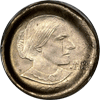
Die Caps
A die cap is caused when a struck coin sticks to the upper hammer die. Once the coin is stuck to the die face, the reverse of the struck coin becomes the new die face. When the next blank is fed into the collar and the strike occurs, the reverse design of the adheared struck coin impresses itself into the new blank. This struck coin is a brockage strike. The coin that adhered to the upper die is known as a die cap. This process repeats itself as more coins are struck by the cap. The greater the number of strikes, the higher the cap metal will be pushed around the upper die shaft. Eventually, the cap brakes away from the die in the shape of a thimble.
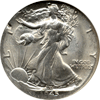
Wrong Planchet
Wrong planchet and off-metal errors occur when a correctly made blank from one denomination is accidentaly fed into a press for another denomination. Examples are a nickel struck on a cent planchet and a cent struck on a dime planchet. The coin struck on an incorrect blank will weigh exactly what the denomination of that blank would have been. An even more dramatic wrong planchet error is a coin struck on a previously struck coin of a different metal.
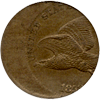
Off Center
Off-center coins are one of the most common and best known types of errors. This happens when a blank which is supposed to be fed into the press, lands in the collar improperly. When this occurs only part of the blank is between the upper and lower dies. When the dies strike the blank, only that part will be struck with a design.
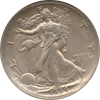
Broadstrikes
A broadstruck error occurs when a coin is struck without the collar to form the rim and edge that is part of the shape of the coin. Coins can be broadstruck on either type one or type two planchets. When a coin is broadstruck the blank being fed into the collar will spread and distort outward as it is being struck because the collar isn't in the correct position to retain it.
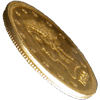
Partial Collar
Partial collar strikes occur when there is a malfunction of the striking press. This causes the collar to be in an incorrect position. The lower die (usually the reverse die) is recessed in the collar. This allows the coin which is going to be struck to have a formed rim. After a coin is struck the lower die raises upwards, pushing the struck coin out of the collar and ejecting it.
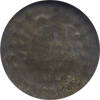
Uniface Strike
Uniface coins occur when there have been two blank planchets in the press at the same time. The other blank will obstruct the die on either the obverse or reverse side, which will prevent it from having that design on the coin. There are many different variations involving uniface errors. In addition to having a 100% blank obverse or reverse, a coin can be struck off-center, with a blank planchet in the collar which will obstruct one side of the off-center. There are also mated pairs which have a combination of multiple errors which can include a side which is uniface. Finally, there are uniface strikes due to a die cap which adhered to the die, forming itself in the shape of a die and striking blank planchets
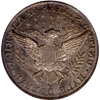
Brockage
A brockage error can only occur when there are two coins involved. One of the coins involved will always be a struck coin which has not ejected properly. That struck coin will find its way back between the dies and will be struck next to a blank planchet which was fed into the collar. The image of that first struck coin will be impressed into that side of the blank planchet. The result will be a second coin which has images of the first coin impressed into it. Those images will be pressed into the coin and the image will be in reverse. This incuse sunken image is known as a brockage.
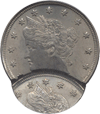
Double & Triple Strike
When a blank planchet is struck by the dies, the normal procedure is for the feeders to eject the struck coin out of the collar and into a chute. If there is a malfunction and the struck coin isn't ejected, it may receive a second or third strike by the dies. A multiple struck coin can happen in many ways and have many combinations of errors.
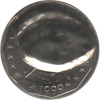
Indent
An indent error occurs when two blanks are fed inadvertently into the same collar, with one blank partly overlaying on top of the other. When the hammer die strikes this combination, the upper blank will be forced into the lower blank, creating a depression which is shaped similar to the upper blank. A scarce type of indent occurs when a blank intended for one denomination lands on top of a blank from a different denomination.
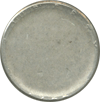
Die Adjustment
Die adjustment strikes are also known as die trials. This error occurs when a coin is struck from the press with very little pressure. When the press is being set up and adjusted, extremely weak strikes occur as the strike pressure reaches its optimum level. These die trials are destroyed after being struck and are rarely found in circulation.
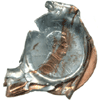
Bonded Coins
Bonded coins are created when the feeder system, which supplies blank planchets to the coin press, malfunctions and jams. When this occurs, a struck coin is not properly ejected and another planchet is fed into the collar and is struck. This struck coin will land on top of the previously unejected strike. These coins will then crush and bond together. This may happen multiple times as more coins bond.
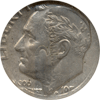
Double Denominations
One of the most expensive, popular, and desired types of errors are the double denominations. This error happens when a coin is struck on a previously struck coin of a smaller denomination. Examples are a cent on a struck dime, and a nickel on a struck cent. The most dramatic are those with considerable design visible from the original strike. There are a few known double denominations with different dates.
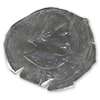
Coin Struck on finger feeder tips
After a recent tour of the U.S. Mint in Philadelphia, it was discovered that the minting process had changed to some degree. One of the changes was that “feeder fingers” were used during the striking of all denominations of U.S. coins. Prior to this tour, U.S. coins that were struck on feeder finger tips were authenticated and described as being struck on aluminum scrap. Coins from all modern denominations have been discovered that were struck on the tips of these feeder fingers.
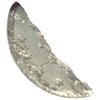
Struck Fragments
The blanking press takes the coils of metal strips and punches blanks out of it, ejecting the webbing at the other end. The webbing is cut into small scrap pieces to be melted and recycled. Occasionally a scrap piece will be mixed with the blank planchets and struck by the dies. Struck fragments are rare in the larger denominations. These can be uniface or die struck both sides and are very rare on type coins.
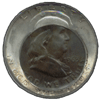
Mated Pairs
Mated pairs involve two individual coins with different errors that were struck together at the same time. Mated pair error combinations can be found in most error types and come in many shapes and sizes. Mated pairs can be overlapped when one of the coins is struck off-center on top of another coin. Another type involves a brockage where a struck coin was perfectly centered on a blank and restruck. Some mated pairs involve a die cap where the cap and brockage coin are discovered together, but this is a scarce find.
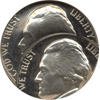
Proof Errors
Proof coins are struck by technicians who hand feed the blanks into special presses. They are produced, examined, and packaged using extreme quality control. It is very unusual to find major proof errors. A few broadstrikes, off-centers, double strikes in collars and off-metals have been known to be found in sealed proof sets.
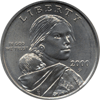
Transitional Error
A transitional error occurs when a coin is struck on a planchet from a previous year with different metal composition. The most famous transitional is a 1943 copper cent struck on a 1942 copper blank. 1943 cents were struck in steel because of the copper shortage during World War II. Other famous transitionals include 1965 coinage struck in silver instead of clad.
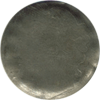
Counter Brockage
A counterbrockage error involves a cap die and a previously struck coin. When a cap die strikes a previously struck coin, the obverse design from that struck coin will be impressed into the cap. The result will be a design where the cap face will be an incuse brockage. When a new blank is struck by this cap die with an incuse brockage image, the obverse will have a raised and spread image from that incuse design of the cap. This brockage impression is known as a counterbrockage.
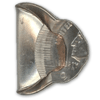
Fold-Over Strikes
A fold-over coin is one of the most dramatic types of errors. It occurs when the blank is standing vertically between the dies. During the strike, the force is so great that it bends and folds the blank. These fold-overs can be on-center or off-center, and come in many different shapes. There are a few fold-overs with multiple errors, either with an additional strike or fold-over. Denominations above quarters are very scarce.

Missing Edge Lettering
A mint error has been discovered on the new Presidential Dollars. These coins inadvertently left the United States Mint without edge-lettering on them. The inscriptions ‘In God We Trust,’ ‘E Pluribus Unum,’ as well as the mint mark and year are absent from these errors.

